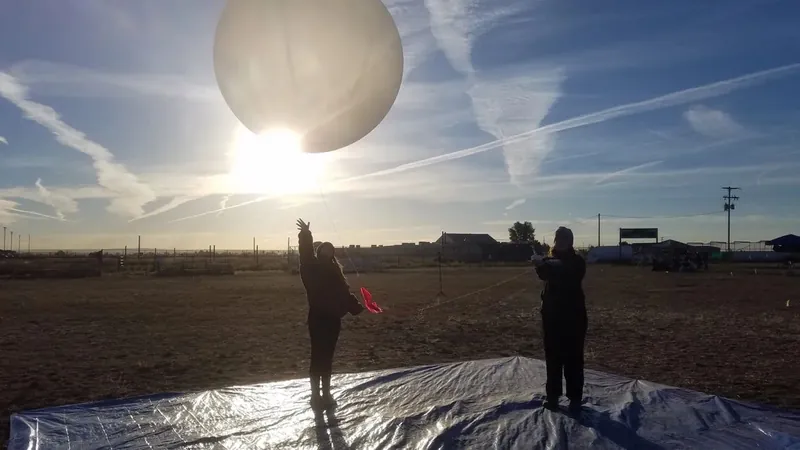
College Students Make Groundbreaking Discovery About Atmospheric Gravity Waves During Solar Eclipse!
2024-10-04
Introduction
In a remarkable achievement, college students have validated a long-standing theory regarding atmospheric gravity waves during the "ring of fire" solar eclipse that took place on October 14, 2023. Their research, conducted under the auspices of the NASA-sponsored Nationwide Eclipse Ballooning Project (NEBP), successfully detected evidence of these enigmatic ripples in Earth's atmosphere.
Research Location and Methodology
The students, utilizing New Mexico's prime geographic location, were able to isolate the impact of the solar eclipse on the generation of atmospheric gravity waves—ripples distinct from gravitational waves that Einstein theorized exist in the fabric of space-time. "New Mexico looked especially promising," stated Jie Gong, a researcher from NASA's Climate and Radiation Laboratory. "We aimed to ensure our measurements wouldn’t be affected by typical sources of atmospheric gravity, such as convection and mountainous regions."
Data Collection Process
In preparation for the eclipse, teams worked tirelessly, launching balloons equipped with high-tech instruments every 15 minutes. These instruments collected crucial data, measuring temperature, humidity, wind speed, and directional flow across various atmospheric layers. After rigorous analysis over several months, the teams found a clear signature indicating the presence of atmospheric gravity waves.
Findings and Implications
“I compiled all the data according to the timestamps, and the patterns began to emerge—this was the moment we had been waiting for!” Gong elaborated, sharing the excitement that spread through the research community upon confirming their findings.
This discovery not only corroborates existing scientific predictions but also holds the potential to enhance weather forecasting techniques. Understanding atmospheric gravity waves could lead to improved models for predicting weather patterns, particularly as climate change continues to disrupt atmospheric stability.
Future Research
As scientists dive deeper into this phenomenon, the research could shed light on why Earth's weather appears increasingly erratic. The implications of this study extend beyond academia; they could pave the way for advancements in meteorology, further integrating our comprehension of celestial events with terrestrial weather systems.
Conclusion
Stay tuned for more groundbreaking updates from the world of science!



 Brasil (PT)
Brasil (PT)
 Canada (EN)
Canada (EN)
 Chile (ES)
Chile (ES)
 España (ES)
España (ES)
 France (FR)
France (FR)
 Hong Kong (EN)
Hong Kong (EN)
 Italia (IT)
Italia (IT)
 日本 (JA)
日本 (JA)
 Magyarország (HU)
Magyarország (HU)
 Norge (NO)
Norge (NO)
 Polska (PL)
Polska (PL)
 Schweiz (DE)
Schweiz (DE)
 Singapore (EN)
Singapore (EN)
 Sverige (SV)
Sverige (SV)
 Suomi (FI)
Suomi (FI)
 Türkiye (TR)
Türkiye (TR)